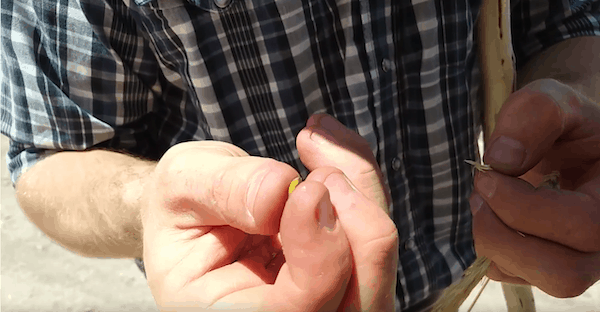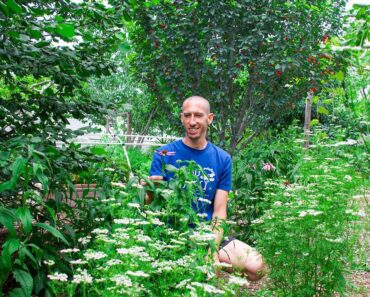We have all most likely seen it in the wild but didn’t know what it was. So the question is, can you eat wild rye?
Yes, you can eat wild rye. Wild rye, a plant often is mistaken for weeds and other useless plants that dot your yards and highways but is, in fact, a plant you can eat. There are a variety of ways that you can eat wild rye and we’ll talk about that in this article.
Many people who are researching wild rye are looking for just a little bit more information than just “can you eat wild rye”, and we wanted to include a lot of that information in this article.
Some back story to the motivation to make this post was basically watching videos about wild grains which led to a rabbit hole of wild rye videos.
I think that wild rye is a good food source because it’s everywhere, though it would help to make this information more known to people so if they’re lost they’ll have another food source until help arrives.
What is the proper way to eat wild rye?
There are a variety of ways that you can eat wild rye. We will get into a little more details, with recipes, down below in this article. The proper way to eat wild rye will vary based on what you are looking to get out of the wild rye.
In a pure survival situation, you can simply pick wild rye and roll it in your hands to get the grains loose. After that, you can pick it apart until you get to the actual grain. You can then eat the grain.
In other situations, you’ll want to use the wild rye as a part of an overall recipe for a meal. So what kind of stuff can wild rye be used for?
What can wild rye be used for?
- Restoration and Soil Stabilization
- Can be used to make a delicious breakfast mush
- The dried flour from grinding the seeds can be combined with other cereal flours to make bread, muffins, biscuits, cookies and crackers.
- Rye is also used to make crisp bread.
- Rye grain is used to make alcoholic drinks, like rye whiskey and rye beer.
Wild rye can be used for quite a few different things. Not going to lie, one of my favorite uses of rye is for making a good rye whiskey! How about you? Can you think of any rye whiskey’s you might have had?
Now that we know of a few different uses for rye, let’s talk about some basic harvesting. I came across a pretty interesting video that shows you how these two guys are harvesting roadside rye. You can do the same thing if you know of a local area where wild rye is growing.
How to Harvest Wild Rye
As you can see in the video, these two guys actually hopped outta the car to harvest some wild rye. In the video, they also talk about eating it right off the stalk. At first, they pick a plant that isn’t ripe enough, and they tell you about the consistency being a little off.
They show you how to roll it in your hands to get the grains loose. You can tell that the grain is ready by whether or not it is “chewy or milky”. If it is chewy or milky, it’s not quite ready.
You can use your fingernail to split the grain in order to see the consistency of the grain. You can see in the image below the actual grain.

How to Remove the Husks From The Grain
Are Rye Plant Roots Good For The Soil?
One thing that people don’t always consider when they are getting started with growing their own foods is whether or not the plant is actually beneficial for the soil.
Cereal rye is an excellent winter cover crop to plant because it produces a ground cover that will hold the soil in place against the forces of nature. The deep root structure is extensive, which leaves a positive effect on soil tilth.
That is why you see wild rye plants growing along highways. They work great to keep the soil in place, especially in areas where it is common for runoff and heavy rainfall. It keeps the soil where it is supposed to be, which is very important for public roads.
Where do rye plants grow?
Modern rye grows mostly in Europe, Asia, and North America. The best climate for rye to grow is where the climate and the soil are relatively unfavorable for other cereals to grow. If you live in an area where the temperatures are too cool for winter wheat, rye most likely will grow there.
Many of the larger highways inside of the United States of America have wild rye plants growing on the side of the road. That is actually where I first started to recognize them.
One thing that I found personally interesting about the rye plant was that once its planted, it tends to come back year after year. That means you won’t need to worry about re-planting and spending any more money to get new seeds once you do the first planting.
That is probably another reason why the highway systems tend to have rye plants, they might have been planted decades ago and just keep growing year after year.
How to Grow Rye
Let’s say that you want to start growing rye. Any well-drained soil will work to grow rye. The best condition to grow rye is in full sun. Open fields where the soil might move are also a great place to grow rye because it will help keep the soil in place.
Is rye frost tolerant?
Most varieties of cereal rye can survive temperatures to -20F (-29C) if the plants are well rooted before the ground freezes. Can you think of a few locations you might have seen rye growing? Most of the time, those locations have freezing ground, yet the plant continues to grow year after year.
How to feed rye plants
When using cereal rye to improve very poor soil, mixing a balanced organic fertilizer into the soil before planting will give better results.
What kind of plants grows well with rye?
A couple of plants to consider planting alongside rye are Winter Field Beans, Winter Peas and Hairy Vetch. In spring, widely spaced rye plants can serve as trellises for garden peas.
How spaced out do rye seed need to be placed?
Single Plants: 3″ (10cm) each way (minimum)
Rows: 3″ (10cm) with 3″ (10cm) row gap (minimum)
When should you Sow and Plant rye?
It’s best to sow rye plants in the early fall, though the cereal rye plants will germinate in mid-fall, once the soil has lost its warmth. You should make sure that the seed is in cultivated soil so that the seeds are around 3 inches (7cm) apart and 1/2 inch (1 cm) deep. It’s a good idea to increase the spacing to 8 inches (20cm) when you’re growing cereal rye with other crops.
Here are a few Wild Rye Recipes
You’re most likely to find rye in either bread or whiskey. But did you know there’s quite a few other ways that you can use rye? Below we’re going to link up a few videos that will teach you a few recipes that include rye.
How To Make a Wild Yeast Sourdough Starter From Home Grown Rye Grain
Sourdough Rye Bread with Mushroom Topping
How to Make Easy Homemade Rye Bread
Related Questions and Posts
Where can I buy rye? You can get Bob’s Red Mill Organic Dark Rye Flour, 22 Oz (4 Pack) on Amazon.
- 19 Common Edible Plants
- The Bushcraft Brain Exposed – 20 Fascinating Facts
- The Ultimate Guide to Living Off The Grid
Want to learn more about wild rye?






